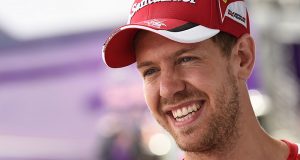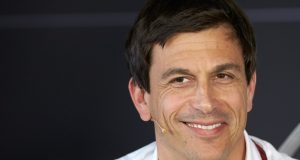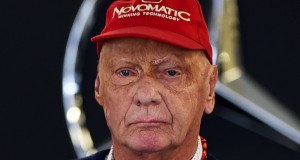Robert Kubica: “I think the car will be strong in Canada”
Robert, you continued your run of points finishes in Turkey. Were you happy with the performance of the car?
It was a good race and I enjoyed driving the car. We had some balance issues in practice, but I had a much better feeling with the car during the race. The only disappointment was that we didn’t get ahead of Mercedes because we are still missing a couple of tenths in order to beat them in qualifying. Right now we have to get everything perfect to jump ahead of them, but I think our race pace is quite similar, maybe even quicker, so it’s important we close the gap. We have some more updates coming along in the next few races, which I hope will give us a chance to do that.
Are you looking forward to going back to Canada? I’m glad that after a year’s break we are returning to Montreal. I enjoy driving there and I like the characteristics of the track. It’s kind of a mix between a high and low-speed track because there are big braking zones and some long straights where top speed is important. We haven’t been to a track with these characteristics yet, so we will have to wait and see how all the teams perform there. Also, because it’s not a permanent track, the grip level changes quite quickly during the weekend and you can push more with each lap, which always feels nice.
What are realistic expectations for the weekend?
I think the car should work well in Montreal so I’m quite confident we can go there and get a strong result. I’ll be aiming to score good points, as we have done all season, which is very important for our position in the championship. It would be great if we could repeat the performance we showed in Monaco and fight for the podium, but if it’s not possible I will simply concentrate on getting the maximum from the car and bringing home as many points as I can.
Vitaly Petrov: “It was good experience to race with the top teams”
Vitaly, looking back to Turkey, you came very close to scoring points. Sum up your feelings after such a promising performance
I have mixed feelings about Turkey because even though it was a good race for me, I was disappointed to end up without any points. All the way through the weekend I was consistent and felt comfortable with the car. In qualifying I made it into Q3 for the first time, which was my target and this was an important step for me. Then, in the race, everything was going perfectly until the incident with Alonso, which caused the puncture.
Did it feel satisfying to race on terms with the Ferraris?
Of course, but it would have been even more satisfying to finish in the points. The car felt very good in the race and I was able to keep pace with the cars around me, especially Massa who I was pushing hard for most of the race. All the cars in the train were very close and it was good experience for me to race with the top teams.
Are you looking forward to the next race in Montreal?
It will be a totally new experience for me because I have never been to Canada before. So it’s a new country and a new track for me to discover. I’ve been told that there is always a good atmosphere in the city and that the public really support the race so I’m looking forward to experiencing that.
What are your expectations for the race?
First of all I just want to get there and see how things go in practice before I start setting myself targets. I need to get a feel for the car and learn the track so that is the priority. It’s a track with lots of big braking zones and chicanes, so I think it will suit the R30 because our car is easy to drive and is good at jumping over the kerbs. I will be targeting the top ten in qualifying and we’ll see what happens in the race.
James Allison: “We’re creeping forward race by race”
James, it was another strong showing from the team in Turkey and more points for Robert. Were you satisfied with the team’s performance? It was obviously very encouraging to have both cars qualify in the top ten and to see them both perform well in the race. But it was frustrating to see both our drivers penned in for the whole afternoon behind the Mercedes and it would have been interesting to see their speed in clean air. In the end we narrowly missed out on getting both cars in the points, but on the whole it was a pretty satisfying weekend.
Talking of the battle with Mercedes, you must be pleased at how the team has closed the gap compared to the start of the season?
We started the year a reasonable amount behind Mercedes and we’ve gradually been hunting them down. Robert was ahead of both Mercedes for the first time in Monaco, but it’s not a typical track, so it was encouraging to see us breathing down their necks at Istanbul Park. It confirms the progress we’ve made to get on terms with them and if we can maintain our current development rate, I’m confident we can move ahead of them soon.
Robert continues to show amazing consistency this year. It must feel great to have such a dependable driver…
I don’t think Robert has made a single significant mistake so far this year. He’s locked up the odd wheel here and there, but during the races he has been pretty much faultless. Having a driver who can maintain a very fast and consistent pace is just what any team needs and it’s something we’re very happy about.
Vitaly delivered a very mature drive in Turkey, although he just missed out on points. Are you happy with how he is developing as an F1 driver?
Vitaly’s performance in Turkey showed us what he is capable of. He was on the pace from the opening laps in free practice and he maintained that all the way through the weekend. He managed to keep Robert pretty honest during the race and he can be very proud of his performance.
We often talk about the effort going on back in Enstone, but can you give us an idea of just how busy it is from day to day?
It’s absolutely flat out all the time. Over the last few months it has been every bit as busy as the most intense period of the new car build during the winter. And that intensity will continue for the rest of the year. This workload is felt at all levels in the team: the factory take up the continuous, unrelenting pressure of delivering the new parts, and the race team then shoulder the burden of fitting them at the circuit and ensuring that we get the most from them in the races. It’s tiring work for all concerned and we don’t underestimate how much we’re asking from people, but the rewards come from seeing the fruits of all our labour on the track as we creep forward race by race.
Looking ahead to Montreal, how do you expect the R30 to perform there?
I think we will be in reasonable shape. There are aspects of the track that will suit us very well. Most of the corners are low speed and you need to be able to hammer across the kerbs quite aggressively, which is something the R30 is good at. The circuit is also very demanding on the brakes, but we are confident that we will be able to attack the circuit even on the very heavy fuel loads that are run in 2010. We will have further updates to the car and I would hope that we can take another step forward in Canada.
Robert Kubica’s guide to Montreal
Montreal is one of my favourite tracks and I’m really happy that after a year’s break it’s back on the calendar. There’s always a big atmosphere and it’s a great event for the fans.
The circuit is very stop-start with lots of heavy braking and bumps, and because it’s not a permanent track, the grip builds up throughout the weekend and you can push more and more with every lap. The walls are also very close to the track so there’s little room for error, but I always enjoy these circuit characteristics. For the set-up you have to concentrate on braking stability and traction, plus the car has to be easy to drive because there are so many bumps.
Although I had a big accident there in 2007, I never think about it and I’m not concerned about going back to Montreal. In fact I won the last race there in 2008 so I’m going back as a winner. I have a good feeling about the track and I’m hoping that the R30 will be competitive. Realistically it might be difficult to get the win, but you never know…
Turn one is a corner where you brake as you are already turning into turn two. You can attack the inside quite hard, depending on your car balance, but it’s important to get a proper line into turn two, which is an annoying hairpin that is quite long and opens up on the exit. You get round the apex early and are soon on the power for the approach to the first chicane, which is one of the nicest corners of the lap.
Turns three and four feel great in an F1 car. You take the corner at about 155km/h and you can gain a lot of lap time by jumping over the kerbs, but when you do that, the kerbs unbalance your car, so you have to make sure that you land in the proper direction. The wall comes very close on the exit and if you can scrape it by millimetres then you will be 0.2secs quicker than if you miss it by two feet. You get a sense of how close it is, but you can’t get too close because F1 cars are quite fragile if you make contact.
Turns eight and nine make up another chicane, but even though it looks like a chicane, it’s actually just a one apex corner. You need to get a good exit out of there because it leads into the hairpin, which is the only real overtaking opportunity on the track. The hairpin is the slowest part of the lap and we’ve had problems with the track surface breaking up there in the past. If you take a ‘V’ line, by sacrificing your entry, you can get a good exit and that’s important to ensure you get good traction leading onto the long straight afterwards.
Mastering Montreal
The Circuit Gilles Villeneuve in Montreal is one of the most unusual circuits on the F1 calendar. With a mix of long straights and low-speed chicanes hemmed in by unforgiving concrete walls, it’s a bit like combining Monaco with Monza and therefore poses some unique challenges for car set-up.
In terms of aero, Montreal will see the cars running with the lowest levels of downforce so far this year. “It’s only Monza where we will run less downforce,” confirms Vitaly’s race engineer Mark Slade. “We will therefore bring different wings that haven’t been used before to ensure good straight-line speed. That will give the car quite a different feel and the drivers will need to adjust to this.”
Because those long straights are followed by low-speed chicanes and hairpins, the brakes can expect a punishing workload this weekend. “Montreal is by far the toughest circuit on the calendar for the brakes with 16% of the lap spent on the brakes, which compares to 12% at Monza,” continues Mark. “There are four big stops where the drivers are braking from over 300 km/h plus down to around 120 km/h, which puts enormous energy levels through the braking system. And because it’s such a short lap, we’re doing those five big stops for 70 laps during the race.”
With cars starting the race fuelled to the brim, the demands on the brakes will be even tougher than in previous years. Compared with the last Canadian Grand Prix in 2008, we can expect around 10% more energy going through the braking system.
The low downforce package means the braking contribution caused by aerodynamic drag will be reduced, putting even more burden on the brake system. “The discs see very high peak temperatures for much longer than usual in Montreal,” says Mark. “We therefore need to keep a close eye on the wear and temperature sensors, which let us know if we’re getting marginal on brake wear because it’s not something the driver can feel in the car.”
The ideal Montreal set-up also demands good traction and a car that can cope with the bumpy track surface. “If the car is bouncing through the air then you’re losing grip,” continues Mark, “so the focus is on trying to keep the wheels in contact with the ground by softening up the suspension to improve ride over the bumps. Running softer suspension also gives the drivers good mechanical grip through the chicanes where it’s important to be aggressive because there’s a lot of lap time to be found.”
In terms of traction out of the low-speed corners, the teams will be keen to avoid high levels of rear tyre degradation. “To ensure good traction we might compromise mid-corner performance of the car in order to have better traction and protect the rear tyres,” concludes Mark. “This almost inevitably causes more understeer on corner turn-in, but it’s about making the right compromise for a set-up that will work for the whole race.”
Driver confidence around Montreal should not be underestimated either, and kissing the walls is just as important for finding those final few tenths as it is in Monaco. “The walls are very close on the exit of the chicanes, especially turn four,” confirms Robert Kubica. “If you can scrape it by millimetres you will be two tenths quicker than if you miss it by two feet.”
© RIF | Renault F1
 Racing In Focus Motorsport and Events Coverage | Racing News, Results, Photos.. from Formula 1, American Le Mans, NASCAR, IndyCar and Canadian racing
Racing In Focus Motorsport and Events Coverage | Racing News, Results, Photos.. from Formula 1, American Le Mans, NASCAR, IndyCar and Canadian racing



